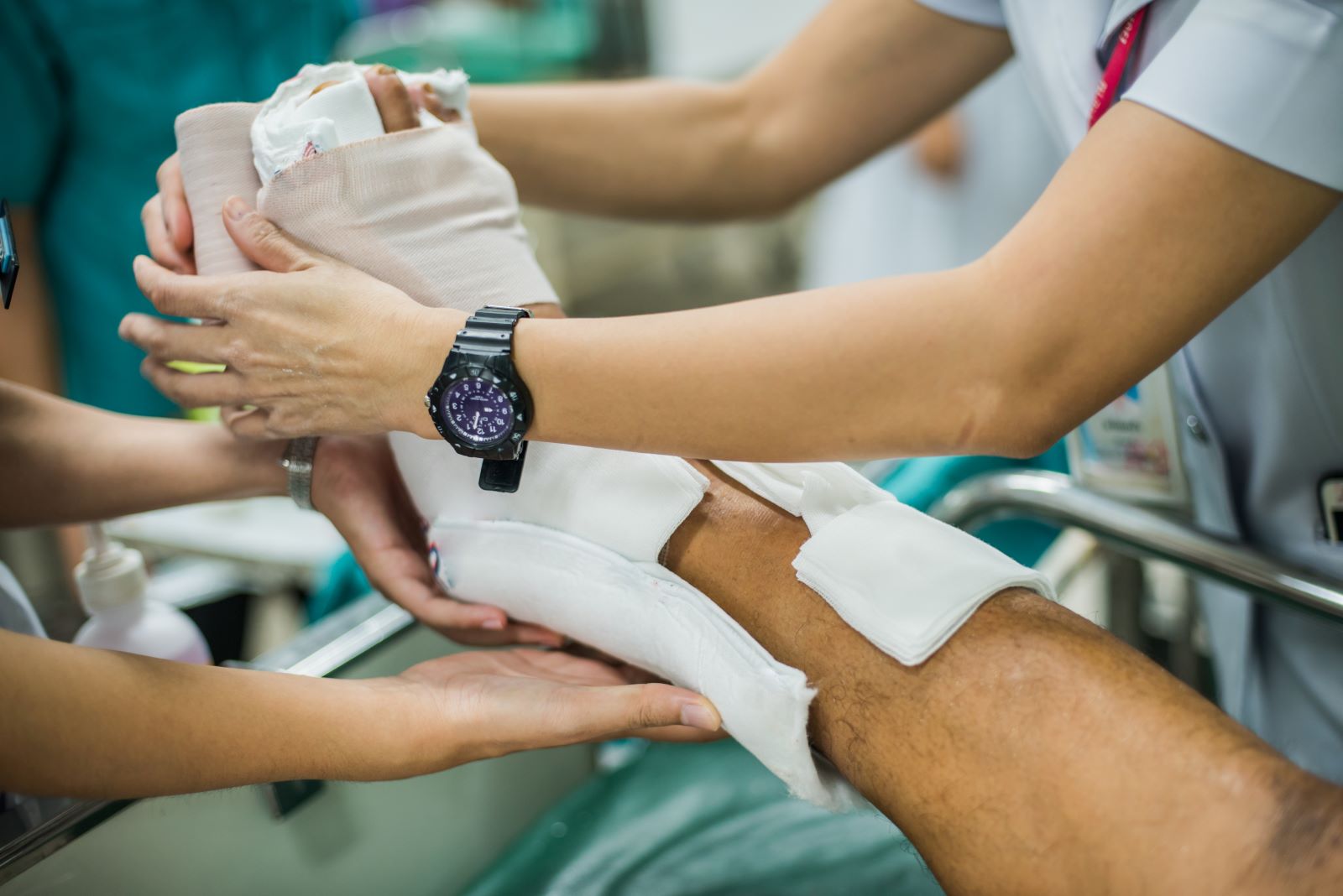<< Back
Coordinated Care Helped This Man Walk Again After a Motorcycle Accident

December 02, 2022
When Jeff Wilbur woke up at Hartford Hospital after a motorcycle accident, he wasn’t sure if he’d lose a foot or leg. But after more than six surgeries, he’s walking in 5Ks and mowing his own lawn.
The 30-year-old from Ledyard was riding his motorcycle on a January warm day when he hit sand and lost control. He later found out he hit a telephone pole and guard rail, and was transported to Hartford by LIFE STAR. He was wearing a helmet and heavy boots, which he believes saved his foot, but it was still traumatic as skin was ripped off his right foot and a compound fracture damaged his left ankle.
> Connect with the Bone & Joint Institute
Coordinated care is key
Treating lower extremity trauma can be challenging, said Chris Hughes, MD, a plastic and reconstruction surgeon with the Hartford HealthCare Medical Group.
“It requires coordinated input with orthopedic surgeons, plastic surgeons, physical therapists and social workers,” Dr. Hughes said. “If scheduling of different treatments is not done correctly, it can cause delays in care.”
At the Hartford HealthCare Bone & Joint Institute (BJI), coordinated efforts to improve processes, focusing on communication to prioritize treatment, help immensely, he said.
Historically, Chris McCarthy, MD, orthopedic hand surgeon at Hartford Hospital, said such complex care can get disjointed or difficult to arrange, so a committee meets weekly to review cases, coordinate communication between orthopedic and plastic surgery practices, and ensure social workers are involved as needed.
“We help keep conversations flowing for patients,” Dr. McCarthy said. “We make sure different specialties are involved early and reduce delays.”
Dr. Hughes joined Wilbur’s care team within a week of the crash.
“It was high-impact injury in a non-clean environment. There was bony and soft tissue injury, so you have to consider amputation as a possibility. Amputation is not always a failure, it is a complex decision to see if benefits outweigh risks,” he said, adding that Wilbur “was realistic and optimistic about his future success.”
> Want more health news? Text StartHere to 85209 to sign up for text alerts
Harvesting skin
To save the right foot, providers performed an ALT flap procedure, taking skin and fatty tissue from Wilbur’s thigh and attaching it and to the foot and blood supply in the leg. Stable soft tissue coverage is important for good wound healing, Dr. Hughes noted.
To recover, Wilbur laid flat in bed for a week and then dangled his feet to test circulation. A Doppler helped providers listen for a pulse in the foot to make sure the skin flap didn’t die.
After it healed, further cosmetic surgeries removed excess fat to so he could wear regular shoes. Wilbur went home in a wheelchair, but was soon using a walker and cane to get around.
“One of my goals was to walk down the aisle at my wedding in April 2022. I was not only able to do that, but in October 2021, nine months after my accident, I walked in a 5K,” Wilbur said. He he came in last place but, in 2022, he came in 340 out of 400 participants.
Success story
The many services at the BJI – including emergency services, vascular, orthopedic and plastic surgery, intensive care unit and wound care – all came into play in this case, said Thomas McDonald, MD, a BJI orthopedic surgeon at Hartford Hospital.
“It is a success story – one for which we constantly strive, but cannot always predict,” Dr. McDonald said. “I am proud to work in a center that has that breadth of service and depth of dedication. It is staggering when you think about it, all the pinpoints of team-oriented patient care from the roadside to the OR to the ICU and then back home again.”